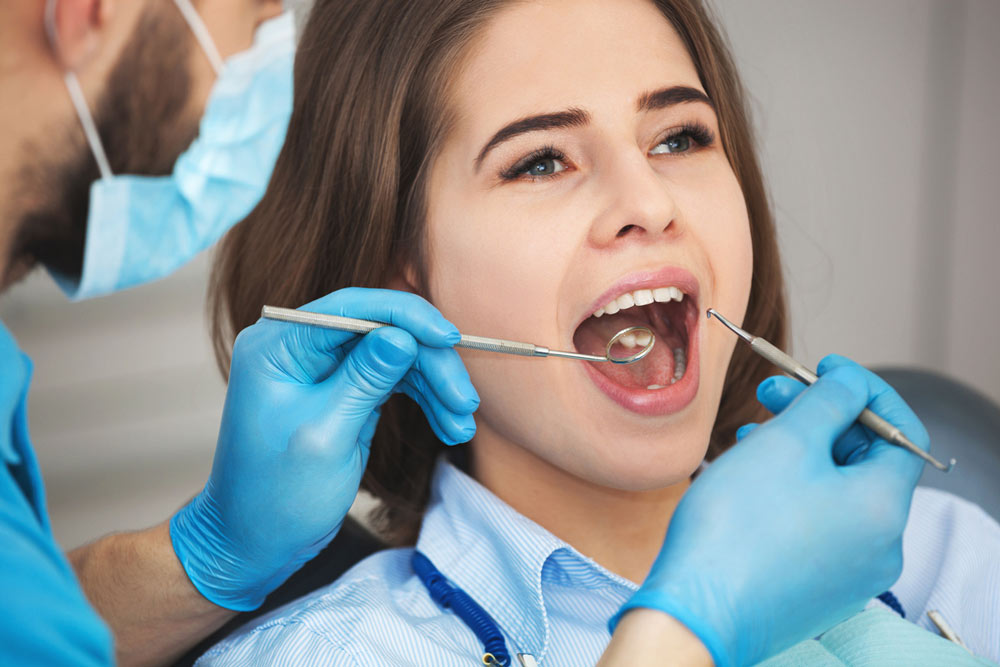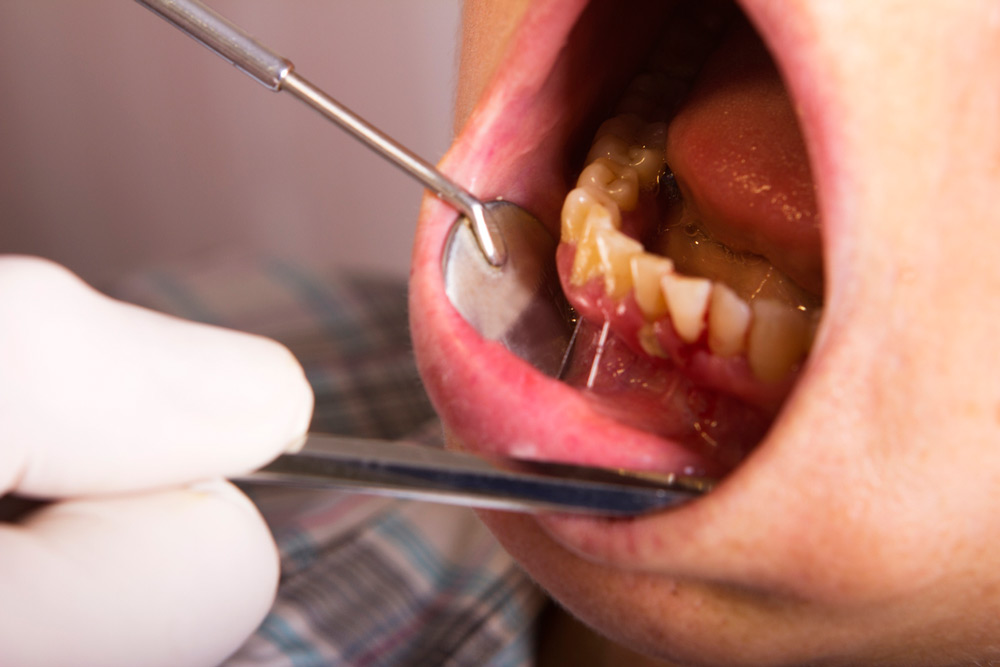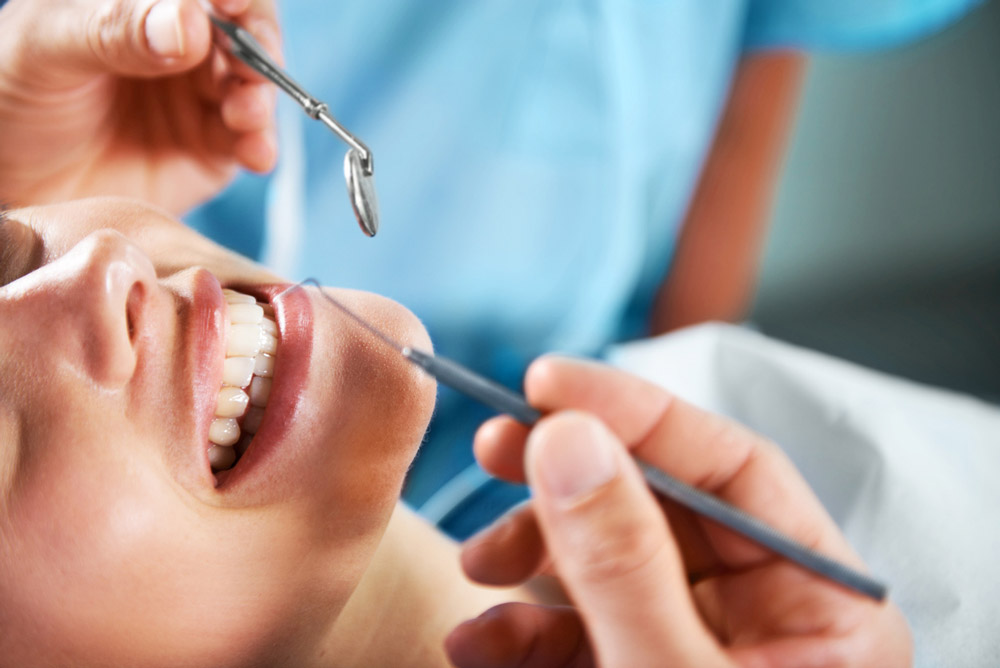Periodontal Cleaning: What Is It and When Is It Necessary?

We all know that cleaning our teeth is extremely important, but having them cleaned professionally by a dentist is often overlooked. A good professional clean every now and then will eliminate tartar, debris, and bacteria from the teeth and gums preventing diseases and maintaining oral health. Throughout this post is we are looking at what periodontal cleaning is to help give you a clear understanding of what it does and when it is needed.
What Is Periodontal Cleaning?
As you may have already guessed, periodontal maintenance is a thorough and professional tooth cleaning maintenance performed by a dentistry expert. Most of the time, periodontal cleaning is used for adults, and occasionally it can be used on teenagers who may have developed bad oral hygiene or do not maintain a balanced diet containing nutrients. That being said, there are certain medications and conditions, such as diabetes that pose a higher chance of contracting the diseases. Other causes of periodontitis and gingivitis include pregnancy, puberty, stress, smoking, and teeth grinding. Periodontal cleaning is used as part of a treatment program for gingivitis and periodontitis, which ranges in severity.
Signs and Treatment for Mild Periodontitis
One of the most common symptoms that you have periodontitis is the accumulation of calculus, otherwise known as tartar. The beginning stages of this may result in a calculus build-up on the gum line and even just below the gum tissue (gingiva). As soon as this is noticed it is advised to book an appointment with a dental professional as soon as possible due to the fast-developing issues that are associated with periodontitis. During your appointment, your dental hygienist a deep periodontal cleaning treatment will be performed, and you will be issued with detailed at-home care instructions. Depending on the condition of the periodontitis, several appointments may be required before it is fully neutralized.
Signs and Treatment for Gingivitis
The earliest signs of gingivitis are swollen gum tissue that appears bright red and may occasionally bleed. In some cases, the gums could feel quite sensitive and may present a throbbing feeling. Plaque and a sticky white film start to build upon the teeth, and when untreated it begins to harden into tartar (calculus). Gingivitis is incredibly familiar with a majority of adults experiencing it at some point in their lives. Treatment for gingivitis typically includes the use of specialized instruments in order to remove the plaque and calculus build up. In addition to plaque removal, the surface of the teeth is often polished and smoothed to prevent plaque and calculus building up again. Specific mouthwashes and toothpaste are sometimes prescribed so that the bacteria can be eliminated and to avoid gingivitis from returning. Again, periodontal cleaning is performed to ensure that oral health is recovered and that the disease does not reform.
Severe Cases of Gingivitis and Periodontitis
When left untreated, gingivitis and periodontitis cause extreme damage in the mouth that can cost a lot of money to repair and will require several sessions in the dental chair. The disease can infect the gums to the extent that they start to separate from the teeth creating gum pockets. Plaque and tartar then begin to form below the gum line and, in some cases, on the root of the tooth. The most severe of cases can result in the loss of teeth. Treatment for severe cases still involves periodontal cleaning; however, it can require more than four sessions. Cleaning at this point usually means deep scaling in order to remove plaque and calculus build-up from the roots of the teeth as well as on the surface of them. Severe cases sometimes involve surgical procedures where diseased gum tissue is removed and grafts are used to replace them.
Preventing Gingivitis and Periodontitis
You’ve all heard it plenty of times before: brush your teeth thoroughly at least twice a day. While it may seem pretty basic, it is extremely important to kill bacteria and prevent build-ups. Flossing should be part of your daily routine at least once a day to remove plaque that lies between the teeth. Consumption of sugary foods encourage the formation of plaque and calculus and so these should be monitored.
Periodontal Cleaning for a Disease-free Mouth
Patients sometimes become confused when dentists advise booking a periodontal cleaning rather than a regular cleaning treatment. This mostly comes down to the structure of the teeth and gums. While they may look healthy, feel great, and periodontal disease or gingivitis is nowhere to be found, periodontal maintenance might still be required. Gum pockets, or areas in which the gum separates from the teeth, is a prime target for plaque and tartar build-up and will form below the gum line making it much harder to notice. Periodontal cleaning will remove any plaque or tartar accumulation from above and below the gum line preventing the occurrence of periodontitis and gingivitis. Gum pockets are really common but will house bacteria that regular cleaning will not reach. When periodontal cleaning is performed, the pockets are sometimes washed with an antibacterial solution to kill any harmful bacteria. Those who have previously suffered from gingivitis or a periodontitis disease will likely undergo regular periodontal cleaning.
When Regular Cleaning Is Enough
For those who do not have periodontal or gingivitis diseases and have an infection-free mouth with no gum pockets, regular cleaning will likely be sufficient. Anyone who has bone loss in the mouth or receded gums will need to have periodontal cleaning. Regular cleaning treatment is able to remove the soft plaque and tartar along with slight stains from the teeth. Regular cleaning is normally performed two or three times a year depending on how quickly plaque and tartar start to build up.
Oral hygiene is extremely important for fending off periodontitis and gingivitis. Both diseases can completely destroy teeth if left untreated and can cause extreme amounts of pain. If you have experienced any of the symptoms above, don’t hesitate in contacting a dental professional as the quicker treatment is administered, the less likely damage will occur. A majority of those who have experienced periodontitis or gingivitis have fully recovered with treatment.
Relate Posts to Read:
Periodontal Abscess: Causes, Prevention and Treatment


